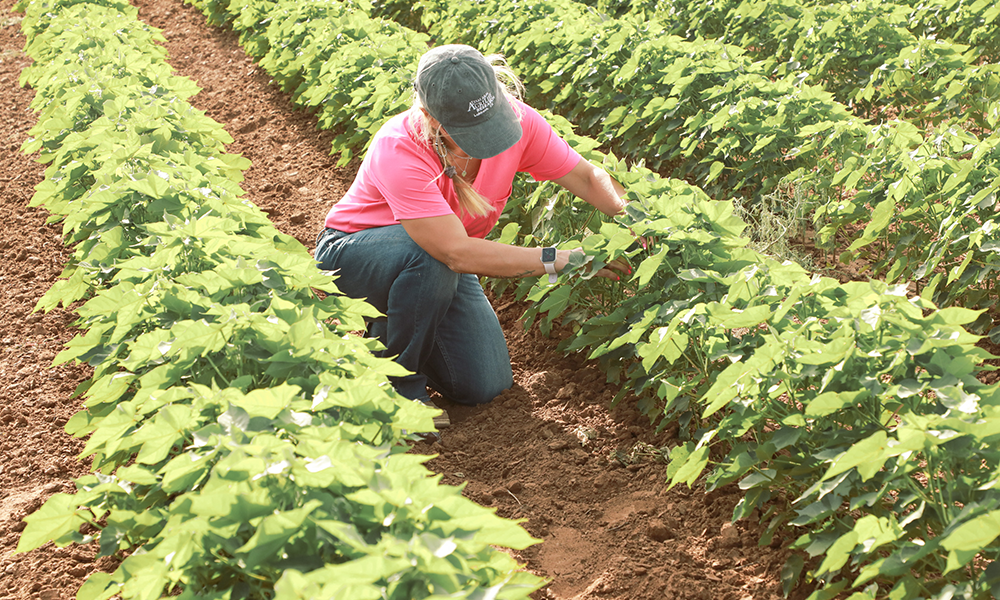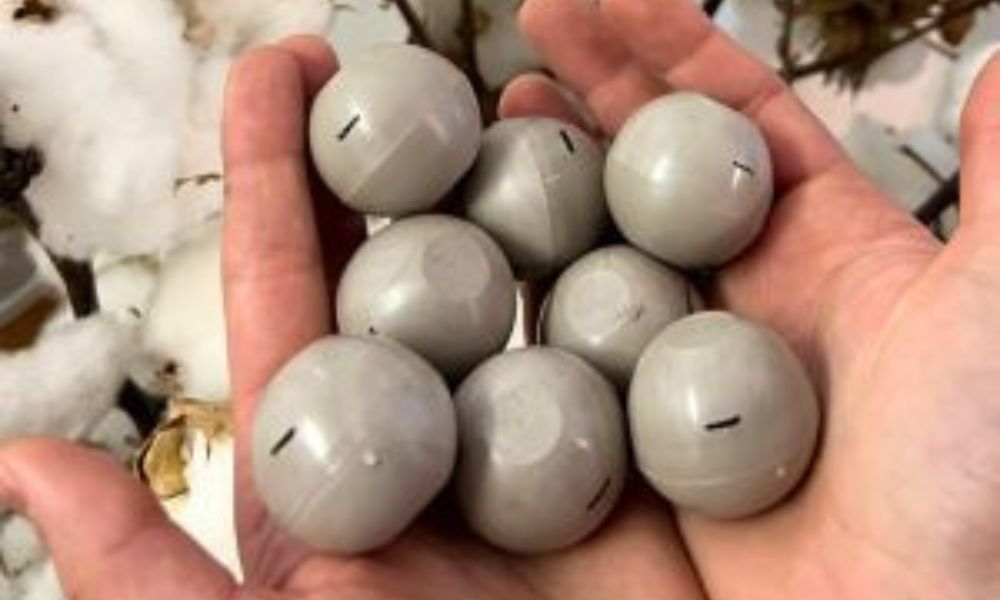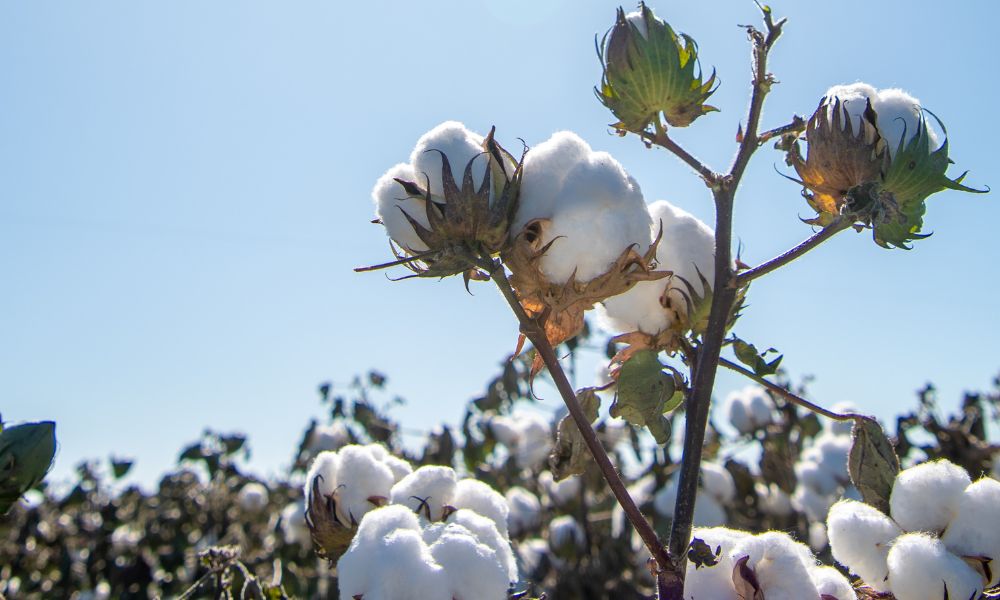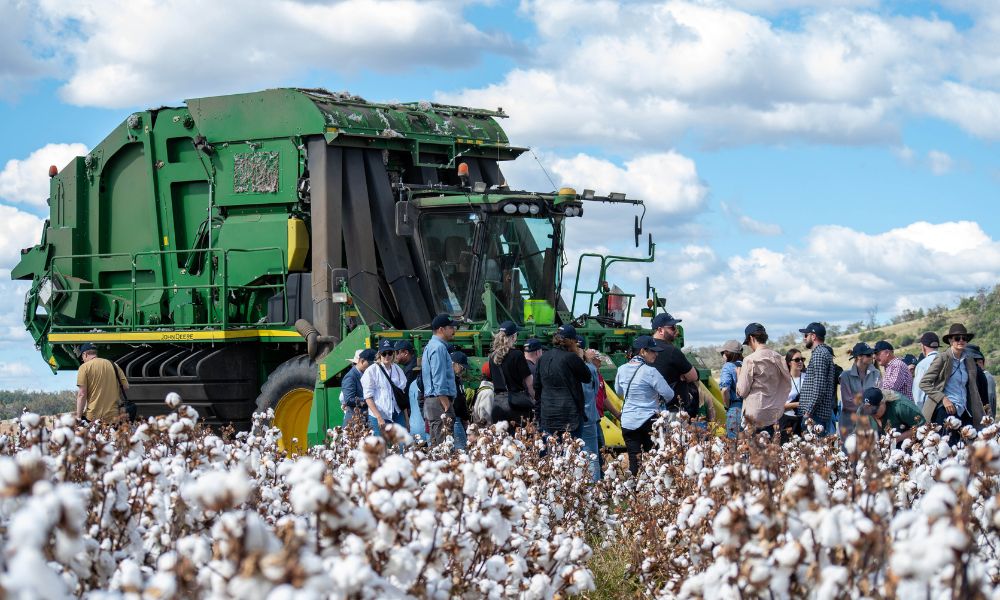Researcher Profile: Michele Reba Explains Sustainable Water Use in Cotton Production
June 28, 2021
A Q&A on How Growers across the Mid-South Can Preserve and Restore Ground Water
Dr. Michele Reba is a research hydrologist and acting research leader at the USDA-ARS Delta Water Management Research Unit (DWMRU)—located on the campus of Arkansas State University. Her work examines the many ways farmers across the Mid-South employ new irrigation methods that preserve—and in some cases even help recharge—water resources.
The Cotton LEADS℠ program sat down with Dr. Reba to discuss her work and the advancements she sees in water sustainability across the Mid-South, a key cotton growing region. For more than a century, the region has depended on the Mississippi River Valley (MRVA) alluvial aquifer—a groundwater source underlying approximately 32,000 square miles across six states—for irrigation.
“The region receives about 50 inches of rain per year, but most of it comes in winter and spring in quantities and at times that we can’t make use of it,” Reba says. “Pumping from the aquifer is relatively inexpensive, and it’s always been there. In some places you can pump from as shallow as 10 feet below ground. However, we’re certainly seeing signs of the aquifer’s decline—we have been since the 1930s—and in the 1980s that decline increased significantly.”
Reba’s work helps farmers improve water resources management to provide new ways of creating a stop gap against seasonal periods without rain. She’s also testing methods for recharging the aquifer with the help from the cotton industry.

Q: What’s the most important thing cotton farmers can do to protect and preserve groundwater?
A: Only applying the water when it’s needed. There’s a big separation between what the crop needs and what’s applied, often because farmers in the U.S. are managing extremely large fields. They simply don’t have the human capacity to check moisture conditions in every field or within field sections, so irrigation happens on a schedule.
New instrumentation and sensors in fields can help farmers know when to apply water, how long to keep it on to allow large fields to become fully irrigated, and when to turn the irrigation off to avoid runoff. Basing irrigation decisions on what the field actually needs in a particular area rather than on a schedule can dramatically reduce water use while protecting fields from runoff.

Q: What technologies have you seen producers use to the best advantage to improve crop yields?
A: Beyond moisture sensors in the field, there are two big tools and methods I’ve seen.
- Irrigation Planning. We often work with growers to use Pipe Planner, a tool that helps homogenize irrigation. Since water typically comes out with more force near the water source, irrigation holes don’t need to be as large closer to the pump. Carefully planning exactly how much to change hole size and frequency across the field means every area is irrigated evenly. Tools like this can specifically indicate how far apart and what size the holes should be to make irrigation consistent.
- Automation. Putting your well on a timer can save hours of irrigation—especially since many growers water overnight. Even starting it manually and having it turn off automatically makes a big difference.
These types of tools are especially beneficial on bigger farms and fields that have fewer hands to manage them, which is the case for most cotton farming in the U.S. Smaller farms might be able to ensure proper irrigation and prevent runoff without the need for sensors and automation, simply by careful attention and assigning the work to farm employees. Across the board, though, looking at the previous season in a critical way—identifying what worked and what didn’t—can really move the needle.
Q: What has been the most surprising data from your research on farm water use, reservoir management and groundwater-surface water interaction?
A: On the fields where we have instrumentation, anytime enough water moves through the drainage pipe, we take a small water sample. So, we collect data year-round. We statistically had more excess nutrient and sediment loss coming off fields during the non-production season.
That really surprised me. I thought for sure the most loss would be during the production season. However, that discovery lends itself nicely to incorporating different practices—like using cover crops to reduce loss or shallow water storage—that are aimed at the non-production season.
Q: What is your research doing to help recharge aquifers and how are cotton growers helping to contribute?
A: There are several tools used across the world under the big umbrella of managed aquifer recharge. We tried direct injection in the Mid-South in the 1960s and 1980s, but well screens clogged up really quickly. Because of land-use density and a confining level of clay that slows down passive infiltration, a spreading basin isn’t a good option for the region either. So, we are trying infiltration galleries, which are basically big French drains. Infiltration galleries use piping to get past that layer of clay, then the water passes through 60 to 110 feet of unsaturated aquifer material which filters it before it hits the aquifer.
However, clogging is still an issue with infiltration galleries. So, we’re working with growers who have farm reservoirs, using these reservoirs as settling basins for the water before pumping it into the infiltration gallery. Right now, we’re testing how much we need to pretreat the water before the gallery clogs. Ed Barnes of Cotton Inc. has been a huge supporter, allowing funding that has helped us get some of the leg work on these projects done.

Q: What can other Cotton LEADS partners and/or the industry do to support your work?
A: We work with some of the best farmers in the region to get a sense of how water resource practices are being implemented. But we need to expand our efforts. As the sensors and analysis we use get less expensive, we’d like to expand our footprint. We’d like to find some producers to work with that may not be as big or employ the latest technology, this will give us a better sense of the range of water management challenges producers face. Knowing that could help us make more positive impacts across a broader audience.
Reba noted that the cotton industry does an exceptionally good job of integrating information about water use and other sustainability issues across its supply chain. She hopes that her work helps to contribute to sustainably for all farmers in the Mid-South, and encourages them to keep innovating and sharing their ideas with each other and with researchers.
“When you sit down with a cotton producer, you learn something all the time,” she says. “They want to do things right. They want to do things well. I’ve learned a lot from producers—they’re on the cutting edge of their business.”
The work we do is possible because of collaborations with researchers like these and partnerships with people all throughout the value chain. Ready to commit to sustainably produced cotton? Become a Cotton LEADS partner today. Interested in doing even more? Contact us for ideas to get the most out of sustainable cotton and your partnership with Cotton LEADS.














Recent Comments